
Witness an Increase in your ROI
Unlock higher rankings, quality traffic, and amplified conversions through tailored award-winning SEO strategies.
Summary
Building brands through communities is a crucial aspect of marketing. By creating a strong community around a brand, companies can establish a loyal customer base and drive growth. This podcast episode explores the strategies and tactics involved in building brands via communities. It emphasizes the importance of understanding the target audience and their needs, as well as fostering engagement and interaction within the community. Building a brand through communities requires consistent effort, authenticity, and a genuine desire to connect with customers. By leveraging the power of communities, businesses can create a strong brand identity and establish long-term relationships with their customers. Keywords: building brands, communities, marketing, loyal customer base, growth, strategies, tactics, target audience, engagement, interaction, brand identity, relationships.
Key Take Aways
8 Key Takeaways for Digital Marketers from “Building Brands via Communities” Blog:
- Importance of Community Building: Building a strong community around your brand is crucial for long-term success in digital marketing.
- Understanding Your Target Audience: Digital marketers should invest time in understanding their target audience’s needs, preferences, and pain points to create relevant content and engage effectively.
- Leveraging User-Generated Content: Encouraging users to create and share content related to your brand helps in building trust, increasing brand visibility, and driving organic growth.
- Building Relationships: Digital marketers should focus on building genuine relationships with their audience by actively engaging with them, responding to their queries, and providing value-added content.
- Influencer Marketing: Collaborating with influencers who align with your brand values and have a strong following can help in reaching a wider audience and gaining credibility.
- Consistency in Brand Messaging: Maintaining a consistent brand message across all digital platforms helps in creating a cohesive brand identity and building brand loyalty.
- Measuring Community Engagement: Digital marketers should track and analyze metrics like engagement rate, comments, shares, and conversions to measure the success of their community-building efforts.
- Continuous Learning and Adaptation: The digital marketing landscape is constantly evolving, so it is essential for marketers to stay updated with the latest trends, tools, and strategies to effectively build and nurture communities.
In episode #10, the founder & community builder at Community Folks, Paras Pundir, talks building communities for both as a profession and a hobby. He will discuss how he successfully established Community Folks with approximately 600 members in India in a span of five years.
Paras is one of the leading community builders who have worked for brands like Facebook, Trello, LinkedIn Local, and more. He is currently working as a program manager at Microsoft Reactor Bengaluru where he has already built a community from scratch to 5,000+ developers.
So let us join today’s Growth Genius and our host – founder and managing director of Infidigit, Kaushal Thakkar, where they discussed building digital brands via communities.
Growth of the community is not just that you will just reach to that extent right away. It goes from the very first pillar of the community a very first thing of community which is like setting up the right mission.
Read Transcript
Some of the important points that are covered in this segment:
- What is community building? (7:39)
- What are some of the best practices when building a community? (15:51)
- How to amplify the community reach once it is started? (21:45)
- How to measure the success of the community? (31:19)
[00:11] Kaushal: Welcome, friends to the Growth Genius Podcast powered by Infidigit. My name Kaushal Thakkar I am the founder of Infidigit and your host for the show. Each week, I interview geniuses who have created phenomenal digital growth. We discuss the key techniques and share insights to help you learn and create your own growth story. Today we are going to discuss the topic building brands via communities, and we have a growth genius Paras Pundir who is the community’s manager for Microsoft, and also manages the community of Community Builder, which is Community Folks. When I decided to cover this topic on communities, I could think of no better person to provide us with insights on communities. Without further ado, let’s connect with the community guy.
Paras, thank you so much for being on the show. How are you doing today?
[1:06] Paras: Doing fantastic Kaushal, and thank you so much for having me. And I think you have done podcasts with like really crazy marketers. So I’m assuming I’ll be able to provide the same value as I come from a community background. But definitely, I work with themes which you all guys work and overall things which we do is basically to grow the companies and grow organisations. So yeah, I’m really excited for today.
[01:28] Kaushal: You are being really humble Paras by saying that but yes we know that you have achieved great milestones in your life, being a TEDx speaker, and multiple awards around the communities. That’s not a small achievement. So I’ll just leave it at that particular point. You’re being too humble and Paras while I revealed already a few of those things, it would help if you could share a small introduction about yourself with our audience.
[01:54] Paras: I am a community builder, and I’m really passionate about it because I build them for profession, build them as a hobby. The purpose why I keep on doing it because I really love the concept of people and growing all together through them. So all my tasks and everything is driven through people, and ultimately it then adds to the community. So if I have to introduce myself, so I’m a community builder, I am coming with almost five years of experience under five years I’ll say I’m not an expert as of now, but I’m still an enthusiast but have been able to help and support a lot of individual community builders and a pretty good bunch of organisations during my career. Maybe the biggest reason is that I took the risk and chose it really ahead of time. And like you know it kind of could be the first-mover advantage you can say though there were other community builders, but I guess they were there and they were doing a fantastic job for the brands they were building a community. But what I did I guess I started with a community of community builders in India. It’s called Community Folks which is the main organisation which I turned into a company because I wanted to tell people that communities can become organisations and it’s a whole brand you are building.
Starting with that which is a three years old community now more than 600 plus community builders and I’ll not focus on the number because we never focus on the numbers. And it is still the same way it’s going on just on referrals not promoting the link anywhere, not even asking anyone to join and keeping a lot of… I guess 600 are inside and at least 400 people are still in the list to get joined or more than that. So I started Community Folks, and then the inception of Community Folks gave me a lot of advantages, and it gave me the idea to start a lot more communities which helped me to start and help a lot of other community builders. So the communities where I’m involved in and somewhat helped them started is one of them is Growth Folks through which I met you, which is a community for growth hackers and marketers.
And one is called Product Folk, which is a community for product managers enthusiasts. It has chapters in India outside India. Then I have a community for software testers it’s called The Test Tribe with almost 5000 members, and they recently did a conference, which is the biggest conference in the world for software testers. And the best guy, I remember, was the keynote guy there. So that’s a big deal for a community to do starting from nowhere. And similarly, and a lot of other communities I have been supporting and helping individually I also run a Instagram community, it’s a group of youngsters, and it’s called ‘Wisdom Baba’ it has like some 55,000 followers around and why I’m calling it a community, not a brand is because I personally talk to these people, and I have made them talk to each other as well.
And when your audience is able to talk to each other, it is no more audience, it’s a community. So that is also there. Then I have led community chapters for the Bangalore region for multiple brands, which is for Facebook, Trello for LinkedIn Local. And coming back to the present status, I am running a community of developers as a program manager for Microsoft Reactor, Bangalore, the global program and what a good news to share that we just turned 5000 members day before yesterday. And it’s been just eight months and some 80 plus consistent sessions, events, hackathons, which I’ve been hosting. And the good part is that have been doing this alone. So I’m the only one in India who is taking care of it. And you can say it like I really want to boast it that I am only one behind it growing it from zero to one, the whole program and taking it to some level.
[5:20] Kaushal: Thanks that’s one of the reasons why you’re on this show yeah please go on sorry.
[5:23] Paras: Absolutely that’s where we met. And apart from that, like you already mentioned Kaushal, I really got a chance to be a TEDx speaker, which is a good thing, community builder going for a TEDx speaker, which is not a everyday thing, a lot of different kind of professional people go there. And then one biggest award from our industry, which these awards were launched last year, and this year, and somewhat the biggest category award I bagged the biggest category award. I don’t know how, but probably this is through people. It’s called The Community Professional of The Year 2020, and it’s by CMX, which is the organisation for community builders.
And apart from that, if you look around my career, which is around three to four years or something max five years. I’ll say I might have spoken at probably 50 plus conferences and meetups and probably hosted 300-400 meetups hackathons all over India and even outside India as well I have been hosting and going there and I host there. And yeah that’s my professional career as a person. I am really, really friendly. You can see I talk a lot like you can already see this was my introduction and I have already taken so many minutes. So I love to backpack, and I’m recently coming from a backpacking trip of 10 days from a farm where I was staying for 10 days in a tent and working from there.
[6:34] Kaushal: I envy you for that.
[6:36] Paras: That was really amazing. I host a lot of house parties probably at my place from the last three years, probably 200 people might have come and gone in my house parties. I love underground music a lot and then what like love talking about life philosophy, karma, and being real in life talking about impact in life. That’s what which is very close to my heart. And yeah, that’s my small intro. Thank you so much for patiently listening to it.
[07:01] Kaushal: Thanks it’s our pleasure and while mentioning all those particular things you mentioned also about Microsoft and that achievement. So congratulations for that achievement. It’s really commendable that at this particular juncture where India is yet at that particular point where many people do not even understand what is community building, you have achieved such a kind of milestone so thanks for leading India into this world of community building.
[7:28] Paras: That’s too much for me. I loved it. Thank you for saying that.
[07:32] Kaushal: Paras for the benefit of our audience, if you could share more information about what is community building, it would be great.
[7:39] Paras: Perfect, that’s the start of the inception of this podcast. And I guess what I’ll try to do is I’ll try to make it very as simple as possible for anyone and everyone. I’ll first give an example of an organisation which everybody knows it’s called Harley Davidson we know especially men they understand too much and they also feel a lot about bikes. I don’t want to be biased here, but I am just saying you must remember that there used to be a group of lot of bikers going together and like you know a lot of crazy sound of those bikes and they are just passing through. I’m sure you must have seen that in life I have seen that a lot of times in life [crosstalk] And then there is a feeling you have after seeing that it’s very fascinating you have this feeling wow I would love to do that someday.
That’s the feeling like this is what they sell. This is what that community sells basically the backstory if you go so Harley Davidson just like another bike brand right just like my Activa or my Hero Honda or anything, but I have never met any other person through Hero Honda when I purchased Hero Honda, and they have made me meet someone else who has a Hero Honda but how come Harley did that? Harley was going down in the 80s. And like you know they were not doing well. So they came up with this thing community program. What they did is they created this group of bikers, and they used to create some kind of program, some kind of trips and stuff like that they called Harley Owner Groups. The short form is HOGS. So HOGS the whole program, there is a marketing team, there is product team, then there is a community team which will just work with the audience and the people, those who have Harley’s and they’ll create some kind of trip some kind of extra experiences where Harley owners will meet each other, which we do in a community where we create experiences so that community members can meet each other.
So what happened with that is that it became so viral, it became such an experience for people that it’s started creating chapters all over the city in the world. There are HOGS chapters in Delhi, Mumbai, even in Jammu there are HOGS chapters like that. Even there is a movie on HOGS. It’s called Wild HOGS, it’s a Hollywood movie. And now understand why Harley would have done that. So to join a HOG either you or someone in your family has to own a Harley. Now understand whose benefit it is always the Harley Davidson, and that’s how they grew. They became a community-driven bike company, and whoever was there part of the community they will first get all the products they are about to launch.
So they will first check-in, they will give them reviews, they will give them content, they will give them marketing, they will give them word of mouth, they will give them everything which their whole other teams are collaboratively doing. That’s how this whole program helped a company, and it’s the company right now. So I guess whoever is building a company right now they’re not building it for just two years or five years. They’re building it for their life. So when you’re building something for life, you need to really invest in people in communities and like you know, your consumer is god right that’s how it’s been said. So, rather than just building audience or just a network, which is just through you, which is one too many, if you can create some program if you can bring community strategy to your main business strategy, you can actually make a community which is many to many, and your members are getting connected with each other and knowing each other through you they will always remember you.
Similar strategies been used by all the bigger organisations like you name it, Facebook changed their mission statement to community building Mark Zuckerberg making his designation as a community builder, Microsoft buying GitHub, Airbnb investing so much in that, if you guys know about Duolingo, so you should read about Duolingo and their community and how they’ve extended, they do 2500 meetups monthly, and they have 300 million active users on their platform just through the community. And that’s how they have grown and that they are a team of two, two community builders. And that’s how they manage these events all over the world. So just imagine like you know the impact these programs are creating. The bigger ones like I have already told you like the Microsoft MVP program or Salesforce Trailblazer community, but there are smaller ones also were like you know small smallish communities are being created and people are using it. So if you have not invested at the moment, you should think about communities because this is becoming a future. That’s the basic understanding of community for me to you.
[11:48] Kaushal: Thanks and Paras you mentioned about let’s say the way the communities are created and you gave the Harley example where to become a part of HOGS, people need to have a Harley own a Harley and that would have definitely helped in increasing the sales of the brand itself. Other than that, are there any other major impacts to the brand itself, because of which they should initiate community building which you already covered?
[12:15] Paras: If you remember, I mentioned how the Harley team will first give their new products to their community. So that loyalty of that community will definitely give them reviews, which is going to help the product you know right like how bigger companies invest so much on the surveys, which will give them just one insight which can change their product. Now imagine this community builder who’s building a community who’s so close to the community, he has this access to ample amount of insights, if he can bring all of those insights and give it to their product team, even to their sales team like you know sales team might not understand why we are not able to convert so they can ask the community like you know, our sales team is not able to convert what they are missing?
So they can tell them like you know these are the things you’re missing, you’re not touching the pain points, or you’re missing that, or they can give them product reviews, or they can give them what should be coming in the product like you know next features. So feedback, product features, helping in sales, helping your whole marketing right because you need content you cannot just keep on creating content from your side you always need support you always need UGC, right. How do you get UGC? All brands, which have UGC have grown like crazy. We all know that, right? And they invest so much in creating UGC. So the community gives you a max ample amount of UGC, you tell me the domain within a company, and I’ll tell you how the community will impact. Community impact your HRs and their whole ecosystem. Why because the community… if you are having a professional community within your company let’s say your employer community, what it will help is in your employer retention and which is the biggest problem for HR, the bigger companies like I’m working in Microsoft bigger companies like these, so many employees and very less connectivity.
But if there is a community, so that’s why they do so many programs and so many cultural things and all because they want to keep people connected and once people get connected, they have more stickiness towards the company. So such programs and even hiring, I will always say like, you know, take the referral from my side. So hiring also becomes really easy out of the community because I know this guy, you must be knowing growth hackers right Growth Hacker platform, right? So you know that the guy who used to be the director of the community Anuj, he’s a really, really good friend, he lives in the US. So you might not be knowing how he became the director of the community. He was just an interested member within the community who was active all the time, and he was doing something else, but he loves growth hacking. And whenever people ask something, he will always answer that or he will always connect them to something, or he will always refer them to the right resources. And seeing that the company hired him, asked him whether he wanted to join and sooner or later, he became the director of the community. That’s how he got into the growth hacking world. So just imagine so this is ample amount of resources. It’s a gold mine. I always tell people.
[14:53] Kaushal: That’s really a good example as well, yeah right from a participant to the director of the company.
[14:58] Paras: Yeah, it’s so amazing right like you just contribute. And as a contributor, you start, and you end up as the community manager wow. This is what you always wanted to do, right? You cannot even… and HR cannot find such a person who’s so passionate about the cause of the company. So just imagine such a thing…
[15:17] Kaushal: I am definitely going to implement this as a part of my strategy as well.
[15:21] Paras: Would love to… if you need my help, please ping me.
[15:24] Kaushal: Thank you sure but then the follow-up question to that particular thing would be that, okay the benefits are clear. And definitely, it should be a part of the business strategy, and it’s going to help in a big way. But let’s say if we had to create and specify that hey these are the best practices, which we should follow when building a community, what would be some of those best practices which you would like to share?
[15:51] Paras: Okay, that’s not a small question. That’s a big question but if I have to answer because there are two kinds of communities, right? If I have to divide them according to their stakeholder manner. So one is a brand community, which like say, I’m running Microsoft Reactor. It’s a brand community, right? There are stakeholders who provide me resources, and I’m employed by them, I run the community. If I’m not there, I can be replaced and someone else can come. And then there are individual communities let’s say Community Folks which is an individual driven thing. I take care of everything; they are not stakeholders in my head, I have to think about it, I have to think about everything.
So a lot of things change from brand to individual. But this is a good thought to have in mind before understanding about community. So that’s why I’ve given first, now you talk about the best practices, so best practices for building a community. First of all, the cause, I say the cause has to be clear and loud. Okay, you should not build a community just for the sake of building one, right? And you know what, like it’s nothing less than building a product.
So that’s how I feel it like if you want to actually validate your community, you should do the same thing which you will do while building or planning a product you know like you will think of an idea you will think about the problems which you think your community can solve you list them down. And then you run it with a bunch of friends or with a bunch of like-minded people, those who you feel are going to be my possible members in the community. So you start from there, you really need to validate your community idea before just saying, I want to start a community of travellers.
You should never start a traveller’s community just because you thought I want to start. No, you need to figure out that I want to start this because you’re not building a community for yourself. Remember that you’re serving. You need to serve people; you’re not doing it for yourself. It will give a lot of things to you, but you’re doing it for others, and you are doing it for them. So you need to understand whether they need it or not. So that’s the first principle validating your community principle or validated community mission, right? Then do try to find a niche which will be better.
And if it can be really, really unique, that’ll be helpful. Then the third thing will be don’t go with a big head you know like I’ll just open up a group and people will start joining in. No, this will not happen. You need to plan it out so rather than doing a big launch party do a small one, start with 20 people and curate them, handpick them, know them, understand them and apply all your things to them first to understand if this will work or not.
Then just like your marketing tactic, I’ll definitely suggest a good content calendar while building a campaign, you definitely need to have a content calendar because all that matters in a community is consistency and responsiveness. So consistency comes with the content which you float, and it will help your community to open up. Okay, it should be a mix of curated content, some personalized content, polls, and some videos and stuff like that. So the consistency will come with that and then talking about the responsiveness you should think that no voice should go unheard that should be the principle while building a community. If you can do that, nobody will ever leave your community because people don’t leave things which give them value and which are very responsive to them. They will never leave it. They will always be addicted to your community. So that’s there then figure out resources do you have them? Or if you don’t have them how you will get them. Resources I mean like you know people first of all, now for people who will require a little bit of resources to survive for such things. For the start, it’s good. I’ll say for the launch and for the start this much is good. Once you prepare that, there could be other things which I can imagine, but I guess for the start it’s the best thing to start with.
[19:19] Kaushal: Okay, so that gives me a hint to ask you the subsequent questions. But before moving to those questions regarding the advanced stages of community, you mentioned about brand-based communities would be different as compared to individual whereas this point, which you mentioned around cause and niche and other stuff that’s applicable to both that’s something which I understand, but is there something different that okay, a brand will do and an individual community will not do and vice versa?
[19:48] Paras: So okay so that’s a pretty good question Kaushal so why I mentioned brand and individual because of the stakeholder because of the governance, right? In a community which is a brand community because this is not going to happen from scratch like you are going to join it and there will be people there will be resources there is a… and plus there are more chances of survival of a brand community because comparatively if you see with respect to any other program or with respect to any other business strategy which you will apply community strategy takes long right to produce results.
And when anything takes long to produce a result, it has more chances to be shut down, right? So, the first layoffs which happen is from the community team, and such kind of team, support team and such kind of team which are which people feel which companies feel are not required. So, that’s why I said resources are required and in individual communities, it becomes really, really tough to survive. I have seen almost 95% of individual communities not surviving and dying. They start with a lot of enthusiasm because they cannot survive. There is no fun for them.
There are no resources for them, and they’re not able to sustain they die, but brand communities can survive because they have money, they have resources and they have support. So that was the difference between a brand community and individual community. Yeah, I guess that’s what you were asking, is it?
[21:03] Kaushal: No that’s clear that one would be in terms of the standing itself and rightly mentioned that brands would have much deeper pockets as compared to the individual communities and with the things which you mentioned in terms of that okay no voice should be unheard. It definitely is quite easy to listen, but very difficult to implement, and that’s where definitely the individual communities will have to ensure that okay when they’re starting, they need to plan it out. Well, thanks for sharing that information. But yeah, that brings me to the questions which you directed us towards. And let’s say that, okay, the best practice is to start the community. We understood that from you very well, but how do you amplify the reach once it is started? What would be the best practices for that?
[21:45] Paras: Okay, so I’ll tell you the session which I’m doing today at CMX Madrid is actually about the growth. So you know what, like, what I have mentioned is that like if you have to grow a community you know the growth of the community is not just you will just reach to that extent right away. It goes from the very first pillar, right? Very first pillar of the community or very first thing of the community which is like setting up the right mission, what I have created is that if I’m making a list of factors, if you can solve all those factors, then your community will definitely grow because ultimately to grow a community, you need two things, you need resources and those resources will help you to get more people. So ultimately that is the thing, but then you need other factors. Like other factors are there which will hinder your growth, which is like existing members are there, and you don’t have a good plan and strategies to actually hold them, which we call them inner circle, right? Inner Circle is basically, so there is a funda of like you know how do you divide the whole community, which is like hundred percent, so you will say one 1-9-90 model, so 1 is…
[22:49] Kaushal: 1-9-90.
[22:50] Paras: Yeah 1-9-90 model, so 1% is basically that audience which is going to make and create content for you. And this is the member which you need always in your life like this is your saviour, this is your guy. So you need to understand that, that this person is really required to have a strategy for them. So the 1% is basically people, those who are creating content 9% is basically those who are engaging with the content. And then you have 90%, which are kind of like lurkers or like you know, which are silently there not there like you know gone but 1 and 9% are your people, and you need to have specific strategies. So when you’re talking to me about what is like required for the growth of a community I will say there are a few factors. If you can solve those factors and go above them, you can actually attain good growth rather than just acquiring members you need to work on retaining members also, right? You need to work on the engagement of the community also.
Like I already mentioned, you don’t have a good consistent calendar, right? Because you’re not following any calendar. You’re just doing it here and there so which is a waste if there will be no consistency, there will be no habit. To create a habit, you need to do it again and again, there are no rituals in your community. When I talk about growth, I really feel like you know, there are a lot of factors I mentioned, which need to be solved and which need to be followed to achieve that growth. Apart from that, if I directly talk about getting a community and to get more numbers in a community, I’ll say, first of all, the community of creators should be fulfilling the purpose for what it has been started. If that is happening, people will come even organically, and like you know, through your ads and everything. So you can do that.
If you want to grow a community, why don’t you create a kind of a social side also of your group? So let’s say you are building a community on Facebook, right? But you create an Instagram page also because Facebook group, it’s an exclusive community not everyone is allowed but you make an Instagram page where you share about the community what is happening, create a FOMO around it, right? Let the right people come and knock at your door, but you will only allow those who are right for your audience. Then if you want to keep that growth, you need to keep it exclusive like I already mentioned only and only if someone has a Harley will come and become part of the community or if I’m going to Oneplus party I need to own a Oneplus phone because they will check my IMEI number so you’re getting my point like there should be a criteria to become a part; otherwise it’s just humanity it’s not community right if anyone can join what is left?
If I am Pundir there will be a community of Pundirs where nobody else would come. You are Thakkar, right? So there is a community of them and nobody else can… so there is an exclusive part to them, right. So you need to maintain that you need to be continuously doing good brand collaboration with some influencers within your industry. You do that, bring them, and show your members how valuable things you are doing show the other side of the world that how valuable things you are doing, so that you can attract more people. It’s just like whatever you will do to attract people towards your product. It’s the similar funda you will require to attract more people or grow your community the same method the same way. But the one thing I suggest is that your product might make everyone use it, but in your community, please keep a filter. If you will not keep it exclusive if you will not keep a filter, then I’m sure It will just be a ghost town in some time because nobody will be feeling exclusive and like you know being connected to the cause. And people will think that you know it’s just a place to be there and nothing else. So yeah, these will be a few things I’ll say, which are required.
[26:16] Kaushal: That’s really good, and that element of exclusivity was really interesting. Okay, the way to grow a community is keeping it limited to a few set of people. And that’s what would make it a real, exclusive thing, which everybody would like to connect to.
[26:32] Paras: Right see you think of it in this manner that you and me and everyone knows like that 80-20 model right? Only 20% will be your consumer. Why don’t you make that 20% consumer of your community? This is what I suggest to everyone. Don’t make your community as your funnel, make your community as like your extended team. So those 20% people have paid for the product. Now bring them all together because they have paid, right? They have taken a big decision in their life to cater. Now bring them together and let them be connected with each other, create such avenues which can help them. They will never leave a product because competition is cutting edge and we all know that you know how difficult it is to survive. So if you can keep your close people closer to you, it’s really helpful.
[27:13] Kaushal: Okay, that’s good. Thanks for that share. Paras, the next question comes in well when you are mentioning this it seems it’s not an easy task and definitely involves lots of involvement not only from the individual effort itself but also from the money perspective is needed to maintain and sustain a particular community. Considering that I understand for the brands like Harley Davidson, there is some model of revenue which is getting generated, and maybe it’s the part of the marketing spends itself. But what about those independent communities where people are starting these communities, but how would they make money or make revenue out of it?
[27:55] Paras: Right, so monetisation of a community so you will only be able to achieve it if first of all, if you have really created it, well, that’s really required. So first you invest your time in the community, which is almost equivalent to money. And then you make something which is valuable enough for people for which they would love to stay and pay around. First part is really difficult if you can crack that and if you can really build a place where people would love to do it, you can start with a small… so there are communities. There are very few communities. I will say that subscription-based. People just love to be around okay in those communities because they find the curated content, they find the curated audience in the world. So that’s helpful. Subscription model…
[28:41] Kaushal: Okay. Something like ToastMasters would you term that as a…
[28:45] Paras: We can say that network capital has the same thing, right? Let’s say medium as a publication. There are a few mediums running a writer’s community for them, so that is also a good example. So there are examples like subscription-based communities are there, and it’s on the go very less in India, but too many outside India so they are there like you already know people pay for newsletters, pay for podcasts, right? So they can definitely pay for communities, and there are communities where people pay. Tanmay Bhatt runs a community for such a kind of Bhatt Army or something, which is something paid. And that is something and the second thing will be I’ll suggest you to… because you’re creating value. You have an audience, you have a good audience, okay, how Instagram influencers are making money.
They are just creating content, and they have an audience they are showcasing they’re selling themselves to the audience they have, right? As a community builder, you also have the same thing: you have 2000 members, 2000 loyal members with a lot of engagement, you show them the engagement and show them the price, go to a brand or figure out a brand. Understand there are a lot of ways also to find brands right? And understand the right brand for your community let’s say I run a designers community which is highly engaged with some 1500 designers. So I’ll reach out to Figma I’ll say, will you sponsor me for the next six months. And they will definitely do it because they will see your engagement, there is a lot of things and it’s the right thing.
So you need to choose the right people, right brands according to your community. So sponsorship is there, then you can do paid events. You can do paid workshops; you can sell paid guides, you can do bigger conferences, where you can make money then you can have paid courses, you can launch paid courses. In the community, you can do paid newsletters curated by the community. So I guess there are a lot of things in there. Moving ahead if you can think of a product, you already have a community, right which is already there. If you can think of a product around your audience around a problem you already have your first customer or first cohort within the community, so you don’t have to worry about it. You already know that this is going to work. So yeah, there are a lot of ways for individual community builders to do that.
[30:50] Kaushal: That’s good but now with all these things, and even revenue in place, definitely there would be a condition where people would say that okay, this community is doing well vis a vis this community is not doing so well. So what do you think would be the measurement criteria for determining or saying that hey, this community is successful?
[31:12] Paras: Okay, factors to define…
[31:13] Kaushal: How would you measure the success of the community?
[31:19] Paras: See there are a lot of matrices people have created, but okay I’ll share a few and then we can see. So KPIs could be first of all active. Okay, so activeness is like you can measure it through analytics. So that’s why I’m saying like you know that you should use the right tool don’t make a community on WhatsApp where you can’t measure anything [Indiscernible: 31:40] So you need to make it on a platform where you can measure things and do stuff, right, like you can do it on Facebook, you understand how many posts in a month have happened? Who are my top contributors so such thing you can do so activeness of your community, then understanding kind of like the number of members so is it growing is it stagnant or is it falling down, right? So that’s kind of something which you… and then you can see the kind of content they are creating some kind of UGC as well along with their content.
So take those examples to measure the community thing then it’s difficult to understand. So a lot of social testimonials can be done right so you can measure it through that like you know that there are people who are really talking about it or there are voices those who have really talked about it on social media, you can track that out. And measuring the community is through people growth, activeness, festivals. And then if you really have to see them then there are a few like you know, brand communities which are into the support side like you know, they are kind of like support communities. And there are cases where the whole support team has been removed, and now the community is the support like you know, complete support of the product. So there’s this community. I forgot the name of this brand, so their response rate is in seconds. It’s like that. It’s very accurate. Within seconds, answers will be given for anything or anything if someone has asked they will get the answer. So it’s like that.
[33:05] Kaushal: This is on platforms like Facebook?
[33:07] Paras: No, it’s their own platform. So there are a lot of platforms out there like Khoros or Manila Forum. Such kinds of platforms are there for a while now, even before we know, like it’s been decades they have been running bigger, older communities are actually on them. They are on the platforms..
[33:24] Kaushal: Yeah so if you could repeat the names of the platforms again, that would be also of great help we just…
[33:30] Paras: I can tell you a lot of platforms like that…
[33:33] Kaushal: What would be the popular ones?
[33:35] Paras: Khoros first of all K H O R O S. So Khoros is there then Manilla forums is there then Bevy… Bevy is a platform which…These are all paid platforms, first of all, let me tell you Bevy is a platform which is more focused on ambassador programs and you know, to manage all kinds of global programs for bigger organisations. Then Mighty Networks is there Tribe is there. Then there is a platform which I’m also building. It’s already been launched in the stealth mode right now. I don’t want to take the name, but yeah it is already there.
And we have built keeping chat and mobile-first approach in mind and completely to help communities which have been built on Telegram and WhatsApp, such kind of platforms because they are not community-building platforms but communication platforms. So with respect to community builders, we are building it, and I am already working with six community builders, six different communities on my platform, and they are all launched communities of technical writers, committee of mandella artists, fitness trainers, and such kind of six communities are already there. So it will be out. So yeah these are the platforms which are there already…
[34:45] Kaushal: That’s nice to know we’ll keep on following you more closely so that we understand when those platforms are being launched.
[34:51] Paras: Sure, sure Kaushal.
[34:53] Kaushal: That’s nice. And Paras the other thing which I would like to understand is the communities the ones which you’re mentioning on these online platforms are more online in nature vis a vis the Harley Davidson example that you gave was more offline in nature. Any specific differentiating factors in terms of managing these communities online versus offline? Would there be any particular difference in the way that they are managed?
[35:19] Paras: Yeah so offline communities, like I’ll say personally if I say I feel online community management is difficult though it’s like sitting in a room, it’s very difficult to bring the engagement because people to make them a real human unit, you actually need to make them meet each other per year, right, so the engagement in offline communities has to be great. But then the scale of offline communities is difficult. And whereas online communities are highly scalable. So what I suggest is a good mix of online and offline community for any brand if they want to grow. Difficulty in managing is there, but comparatively, I’ll say in an online community because you have to manage a lot of things like moderation, content stuff like that while offline communities are basically events, right? Offline community is like that; it’s more of an event. So events are just one part of building a community. There is a lot more after that and before that. So yeah I’ll say managing an online community is a little bit far more difficult not a little bit far more difficult than managing just an offline community. Yeah, that’s the answer. Anything specific you want to ask?
[36:28] Kaushal: No, I think that clarifies the only other thing would be that okay in terms of costing an offline also would be equally expensive because getting all those people on the floor and traveling from multiple places…
[36:39] Paras: Offline is definitely expensive. Offline has to be expensive, right because you’re doing things, but you know what, like I mentioned a lot of these programs which are being run by… So I guess we all know Headstart right, Headstart foundation, so Headstart is doing an amazing job every second Saturday. They’ve already celebrated their 10th anniversary. So they are doing a tremendous job every second Saturday they’re hosting in different cities but all volunteer driven. So if you can actually… you know what like Kaushal I guess see why we’re talking about Headstart it’s been 10 years now right that’s why we are talking about it. It makes a lot of difference the trust and everything people love to boast about it, talk about it. So such… like I already mentioned the starting community just like a brand, right? You have to keep it for a while to make people trust you and you have to keep doing it. Now, everybody would love to say I’m a headstart moderator or headstart city chapter head that’s such a cool thing for them. You need to make it cool.
[37:36] Kaushal: I see that on LinkedIn as well these days.
[37:38] Paras: Yeah I was there with Headstart. So I was part of… we launched Headstart Jaipur Chapter 2013 I remember, so I know them from there, and now these guys are like really good friends Amit, Deepika, Ojasvi, these are like really good friends because they’re from the same ecosystem.
[37:57] Kaushal: Great, that’s really nice. And I would consider Headstart itself as one of the examples of the success story of an offline model in recent times, other than the Harley Davidsons kind…
[38:08] Paras: Without any doubt and their events are paid and still always full. So they are amazing.
[38:15] Kaushal: Yeah and similarly on the online side, would you have any success stories or you think that those are some of the most popular communities online?
[38:25] Paras: From India?
[38:26] Kaushal: Yeah.
[38:27] Paras: India it’s difficult I’ll say.
[38:29] Kaushal: Microsoft itself?
[38:32] Paras: Yeah, so even my program is like it’s a new program right so I can’t just say about it. I really want to give an example of an old community. A few developer communities are successful on slack and other channels. And then a lot of mother communities, mother parenting communities or women-specific She Rose if you’ve heard about She Rose in which they have like multiple such kinds of things then maybe Chakra and such kind of platforms they have communities. So it’s actually coming up Quora has… I recently came to know that there are forums and there is a WhatsApp group which is highly engaged, they have been running it from 2012 so such things are there, but they are not easily located or searchable or discoverable or something, so such communities are there but outside India, there are multiple like I already gave you example of Duolingo, which is a strong community and then lot of WhatsApp what you call Facebook groups, are there a lot of individual communities are there on different such platforms. So these are there in the market with respect to brand or non-brand they are thriving they are really thriving.
[39:40] Kaushal: And do you see any impact of let’s say this lockdown and other things on the communities especially are they growing or they had a step back?
[39:40] Paras: I’ll tell you because people have got no way to meet offline they all are meeting online so as a community builder my work has just increased because people have turned to online. And they really interact. And they really want to meet more often over Zoom calls or over Airmeet or something. So they really want to talk. So I’ve been… and then this pandemic has given a lot of parents a clarity of how important communities are. So if you’ll see, there is a big, big rise in communities and the importance of communities and the hiring of community managers at different places. So I feel it’s been a good year for community management, like maybe a bad year for a lot of other domains, but definitely a good year for community managers and community management people.
[40:37] Paras: Okay, that’s the silver lining of the COVID situation. And any difference that you see between the Indian communities or communities being created in India versus the communities created in countries like let’s say USA or some European countries is there any difference between the two ecosystems?
[40:59] Paras: Yes so I’ll tell you the thing is the concept of forums and stuff like that it’s an old thing for people who are in the West for them. For them, it’s been there for a while gamers already been there on forums and having discussions neighborhood communities were there since long. So you know like if you will see there is a big difference in communities being built here and then outside because outside people are more… they are really open on online communities, which a community builder will always want his community people as members to become open. So and comparatively in India, it’s just coming up, right? People are getting into it understanding, okay, through a WhatsApp group, I can meet so many people, and I can get an opportunity, people understanding, okay, I can actually make money out of my Facebook group. So such things were not there, right. People never knew about that.
Like I said, subscription-based communities right now in India, it’s very difficult to make your user pay subscription outside India. It’s like people are paying, they really love it. Because they know how much effort is required to build that community. So just like everything else, we are a decade back with respect to community management, but I’m glad that we are growing like Kaushal. And I’m also glad that somewhat, I’m also involved in that like I am really part of that growth of community ecosystem personally and then our community, community folks, it’s creating that kind of platform for a lot of brands, a lot of founders and a lot of community builders to understand the concept of communities and apply it on businesses. So that’s an amazing thing. In 2019, I organized the first conference of community managers or builders in India, you can say Asia also it was, but that was for the first time it happened. I did developer-specific community managers; we call them Devrel developer relation guys. So Devrel [Indiscernible: 42:53] kind of a thing we did in 2019.
So such things are coming up and there are more opportunities happening for… I guess it will grow. Like I see a drastic change in communities and this whole front in the next five years like quick, drastic change, you will see a lot of companies adapting and you see a lot of VCs hiring community managers to manage their portfolio companies and to do stuff around that. So a lot of…
[43:18] Kaushal: That’s interesting. And managers would help the VCs in terms of…
[43:24] Paras: So they will help… so they will create programs, which will bring startups together. That’s the game, right? That’s the point. If under your head, I can bring someone together, they will always remember you, and they will trust you. It’s all about the game of finding trust. So that’s what they’re doing.
[43:42] Kaushal: Nice interesting ways Paras thanks for much of the information which has been shared and now and we would like to know more about you itself now. I saw your LinkedIn profile and saw that from a community contributor LinkedIn which you are a city host to this particular status where you are managing multiple things at Microsoft, you also have this community of communities, right? And that’s where you earned that particular status of the community guy. How do you remain growth-focused, where you were able to grow so fast by yourself?
[44:16] Paras: First of all, thanks for the research. And if I had to answer that, you know, my whole thing for life or perspective, everything is driven by people like I really, really love that part. You know, like working with people growing with them growing through them. So it’s like that for me. So when you ask me, how do I stay growth-focused because there are few people who are really looking up to me, the next time Paras will meet he will tell us something new. Right, so there is a responsibility which I have like I already told you the page which I have on Instagram.
I’ve been running it as an anonymous for four years as of now, right anonymously, not telling about it to anyone and when people get 2000 followers, they talk about it everywhere it has 60, and I never talk about it because I was being able to be anonymous and then push these youngsters to do something and every time they want to hear something good from me. They want to hear a hustle which I’m doing so I guess it’s people which helps me stay motivated to stay growth-focused. People like you like what you’re doing. I wanted to do this, but not be able to do it. So people like you, I meet through communities and which inspires me to do more things and better things. And personally, I guess I’m very curious by nature, and my personality is also that I love knowing things be it anything, so that also keeps me on my toes for everything around that will be my cumulative answer for the growth-focused mindset yeah.
[45:43] Kaushal: Okay great and things you mentioned about the youth. So let’s say if you were able to time travel at this particular minute, what suggestion other than the few which you already gave in terms of being focused, being curious, what will be the other suggestions which you will give to your younger self at the start of your career?
[46:01] Paras: You know what like this has been asked to me earlier as well, but I don’t want to boast about it, but I really feel what I want to tell to myself or to anyone is to not follow any bullshit but actually think about what you really like and try to go there, whether it gives you money for the time or not. This is a learning which I want to give to anyone or everyone because I come from a tier 3 city and studied in a low tier college, not that great.
And then coming up from there and figuring out everything myself been able to work with let’s say 15 odd organizations be it like small organizations or big organizations but 15 odd during my time, this was something which I was following, right like I was not working for the money at the time I was trying to figure out that this is something which makes me really happy about it, then I’ll pick it up else I will leave. So this will be my suggestion, which I didn’t have earlier. I was just doing it every day getting up but then once you reflect on your past and you think so then I realized that this is what I’ve been doing and this is one suggestion, which if I would have given it to myself, I would have more clarity while doing it. I was doing it, but without the clarity, I was just doing it with what your heart says kind of a thing. I was that kind of person.
But that’s my suggestion. Like you know, you really need to focus on what makes you happy because your work is going to take a lot of part of your daily life. So it’s better that you find something which really, you can resonate to and really be happy about it. Now. I’m really happy that I chose that.
[47:28] Kaushal: Thanks Paras now we’ll move into the Speed It round. And I’ll request you to keep the answers short
[47:35] Paras: You don’t have to request me for that.
[47:37] Kaushal: Yes I need to request you so any quote that you live by?
[47:42] Paras: It’s a hashtag it’s called Rukna to Hai Hi Nahi.
[47:46] Kaushal: Great if not communities, what would you be doing?
[47:49] Paras: I would have been a footballer, playing for Manchester United I wish I could have.
[47:55] Kaushal: Wow wonderful. Any daily habit that has been a game-changer for you?
[47:59] Paras: Recently adapted in this pandemic, I started skipping breakfast or having black coffee brewing black coffee for myself and having it, which keeps me on my toes, helping me stay focused.
[48:11] Kaushal: Interesting! Anything that you want to correct in your life?
[48:15] Paras: Clutter less. This is what I’ll tell myself, but I don’t know how to be stop being curious, so I don’t have answers, but this is what I’ll tell. Declutter yourself, Paras.
[48:26] Kaushal: And how would you define Paras Pundir in one word?
[48:28] Paras: That’s my favorite word, it’s called its impact.
[48:32] Kaushal: Impact wow, that’s really nice and Paras how can the audience stay connected with you?
[48:38] Paras: First of all, I’m very reachable. So you can find me anywhere Paras Pundir or something but my social handles, they all start with iamparaspundir all of them I mean on all the platforms it’s the same. So you can just keep one thing in your mind – iamparaspundir and then you can find me anywhere, wherever you want to find me.
[48:58] Kaushal: Wonderful and yeah this is my last question. Any parting thoughts that you would like to share with our audience?
[49:05] Paras: With respect to communities, I’ll say that invest now okay this is the… you might have heard a lot of investment advices from people to invest in Bitcoin or any other mutual fund, but I’m telling you the kind of accumulated output you get by building communities or by being part of communities is way more than you can think. So invest in as an individual or as a brand, invest in communities. Put your time, think about it, as a human, I’ll say try to be more human. They are very rarely real humans, so try to be a good human and help others while you are helping yourself. This way we can give back to people, give back to our roots and actually keep the balance. If we all will keep on taking then how the balance will be there. So it’s better that you keep giving and keep moving. So that will be my parting thoughts yeah that’s about it.
[49:57] Kaushal: Nice that’s good thanks Paras it was wonderful having you on this particular session. And we learned a lot right from the small, small things, but life lessons being happy being impactful tons of those. So thanks a lot for sharing this information with all of us on the show.
[50:17] Paras: It means a lot like it’s too good to be part of such programs because they give you first of all a sense of validation that what you are doing was right and then a chance to actually sit for a while and reflect your thoughts and reflect your learning. What you have asked me I am not thinking about them all over the day, right? So these are the places where I can actually think about and think about the journey, think about my past, think about myself, you reminded me the one-word thing it used to be my word for always I wanted to have a tattoo of that like you know impact I wanted to get it imprinted because I really love impact. So such things you don’t really do it every day, right? So thank you for having me I really hope I have added value because that’s what I do want to do in life, even if I’m there for a minute so and please feel free to reach out to me for any help if I can’t help you personally, I will definitely connect you with the right people. I’m a really good matchmaker so yeah.
[51:17] Kaushal: Thanks a lot, Paras. Loved having you on the show thank you. Thank you so much for listening to this episode of the Growth Genius. I hope you learned something today that would help you to grow. If you did, please share this episode with your friends and family. If you’re listening to this on the Infidigit website, I would request you to use the podcast app on iPhone or download Google Podcast or Spotify on your Android phone. Subscribing to this podcast will ensure that you get the episodes regularly on your phone. The podcast icons near the audio streaming widget on the Infidigit website should help you to navigate to the show on your podcast app. Also, if you haven’t yet, please subscribe to the Growth Genius show wherever you’re listening to this podcast. Thank you so much for listening. Now go out there and create growth for yourself and your company. Thank you
Contact Information:
Genius, Paras Pundir
https://www.linkedin.com/in/iamparaspundir/
Host, Kaushal Thakkar

Popular Searches
How useful was this post?
0 / 5. 0

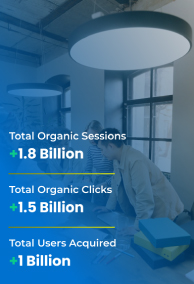
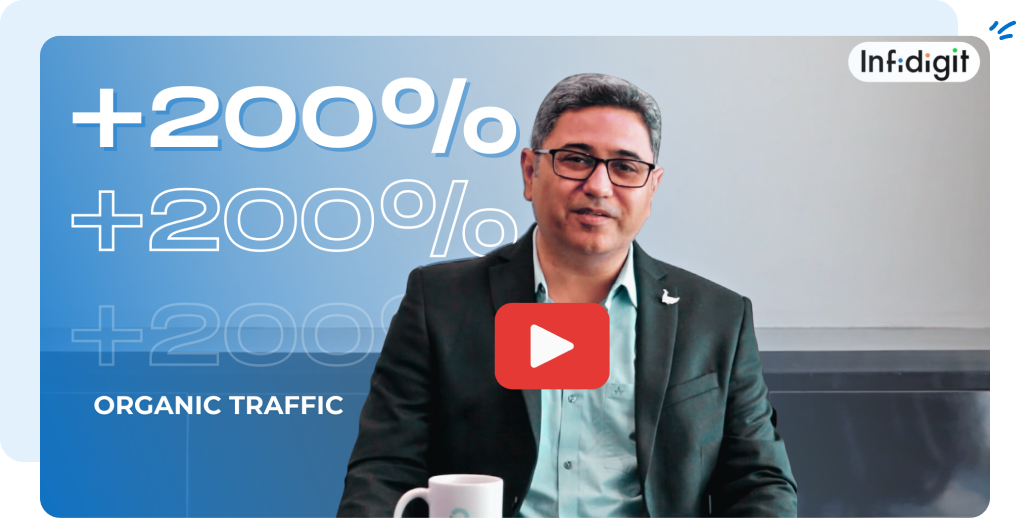
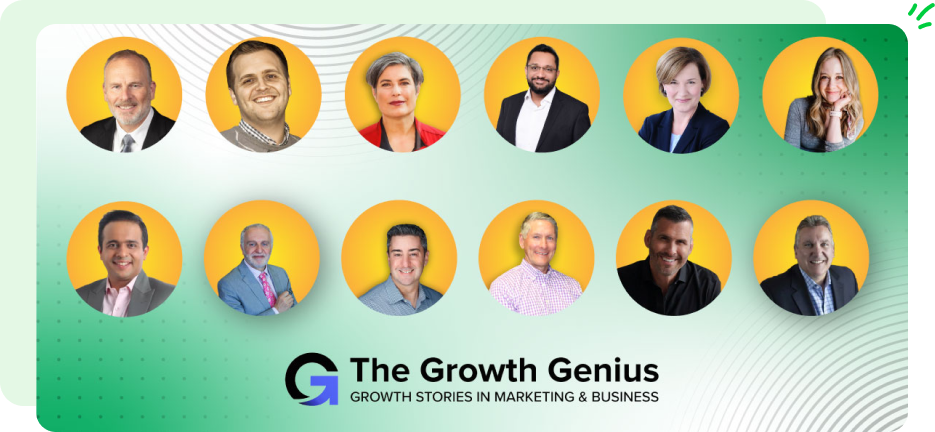
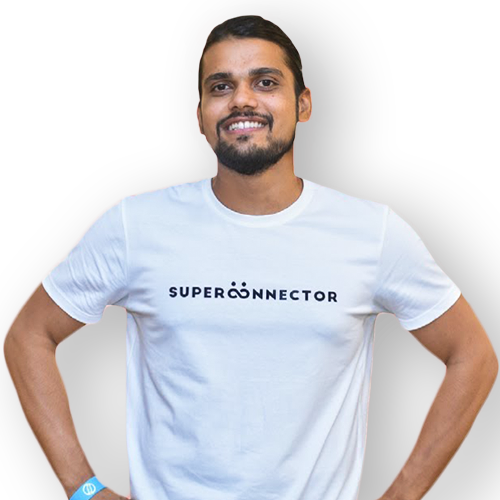
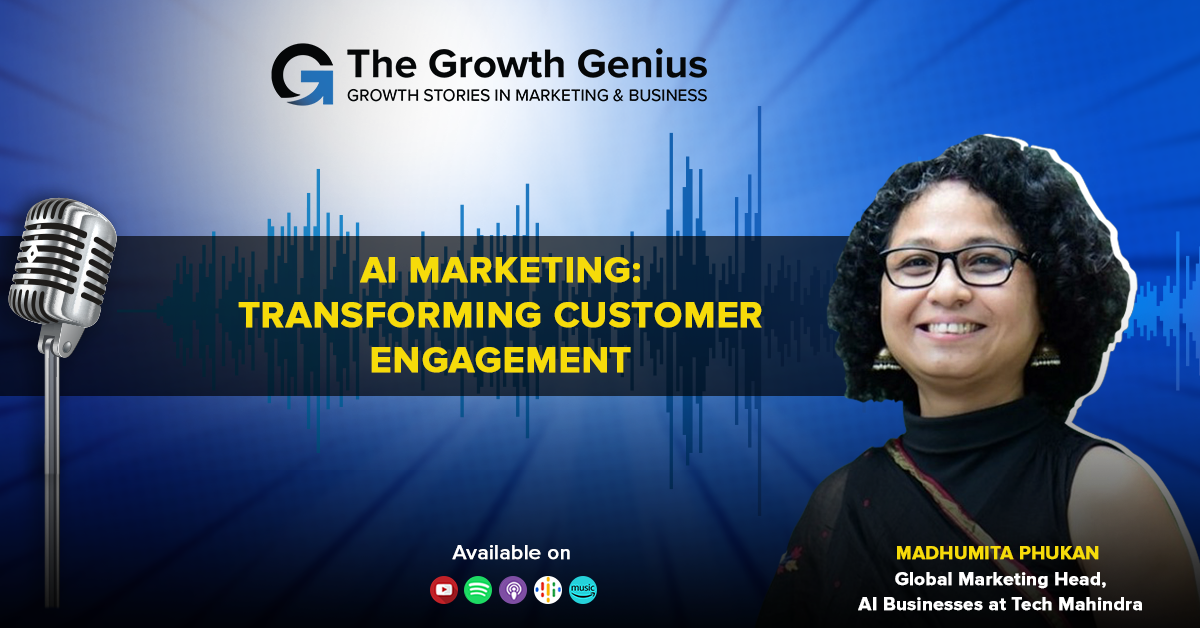
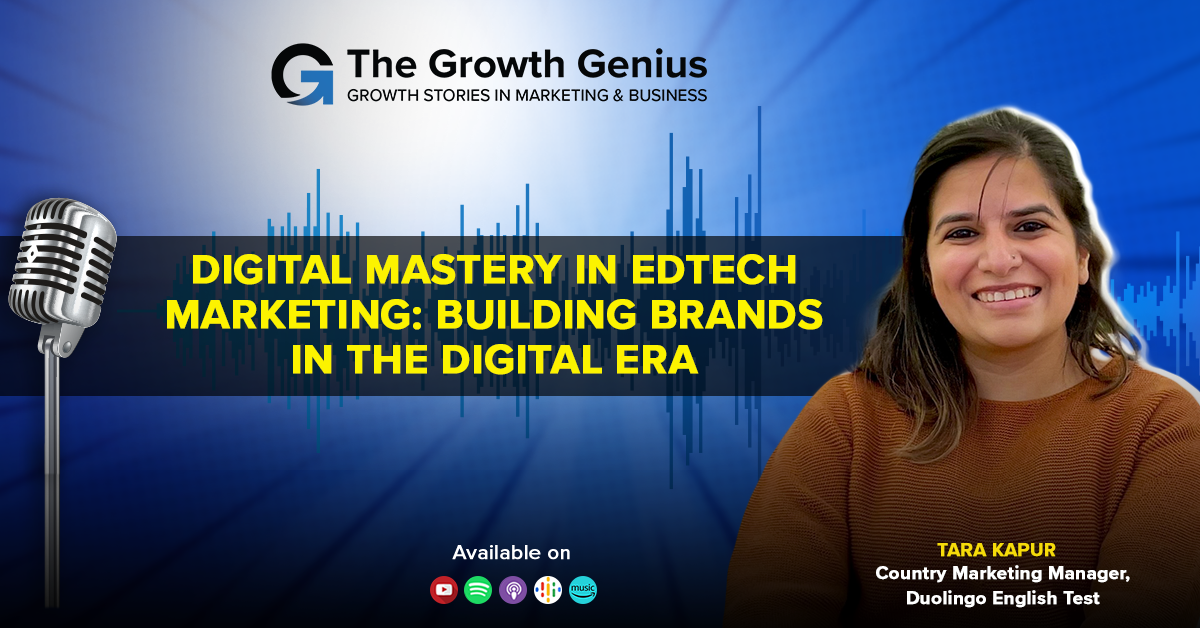
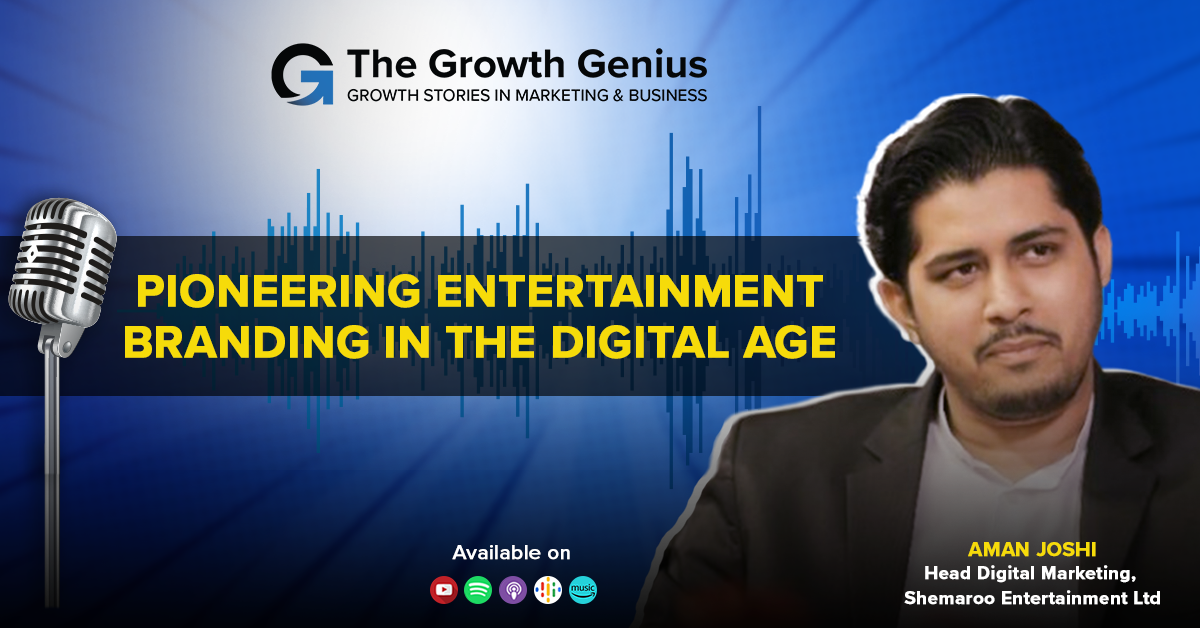
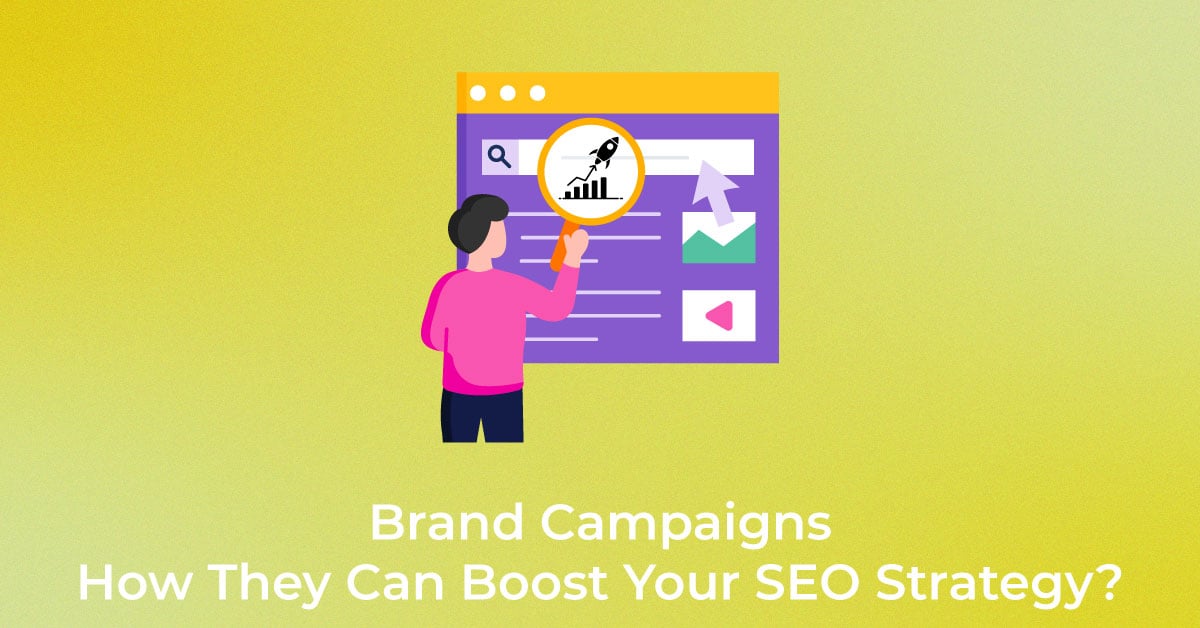
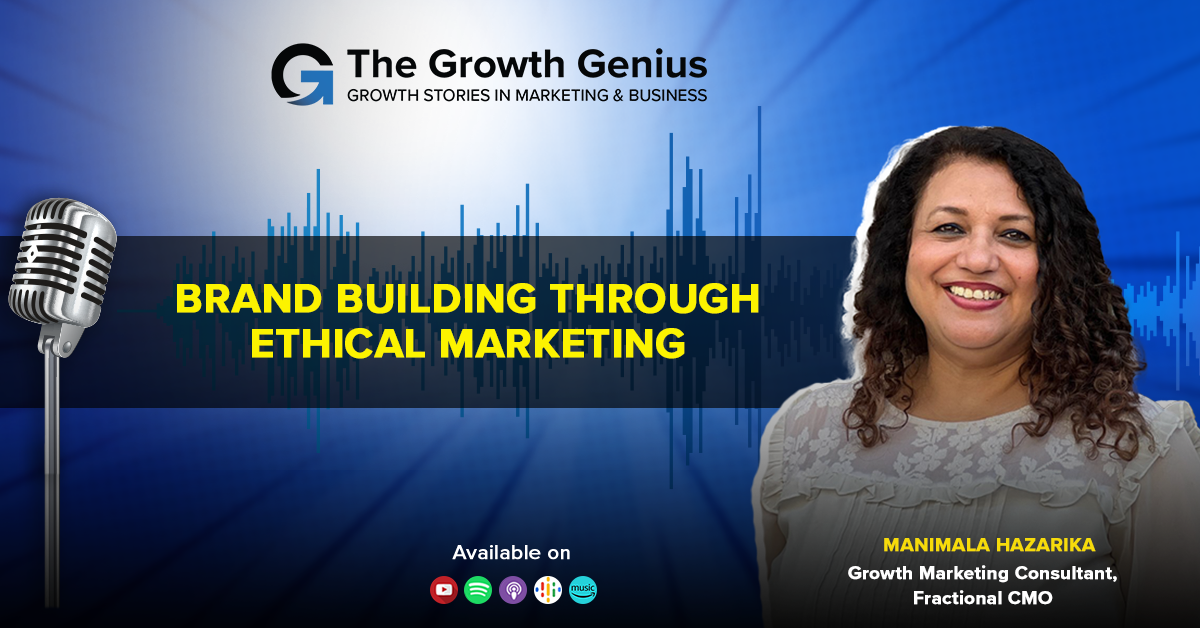
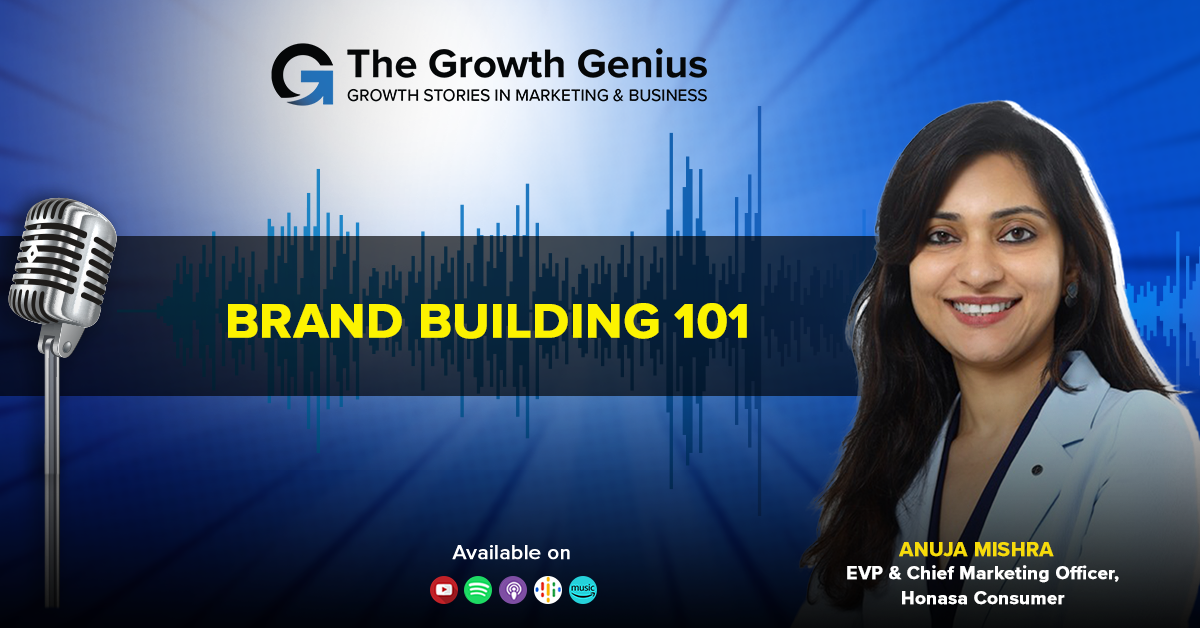
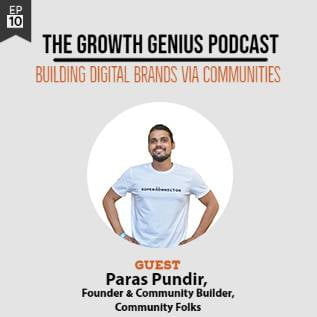
2 thoughts on “Episode 10 – Building Digital Brands via Communities”
You did a fantastic job with your blog. I have a suggestion. Please add Relevance to your list. Content marketing and content management experts and influencers have a high opinion of this site. It’s a great digital marketing content resource as well.
After reading a few of your previous posts and of course, the most recent one, I feel you must also add Relevance.com to your list. Relevance is a fast-growing community of experts, influencers, and professionals known for their proficiency in the field of content management and content marketing.